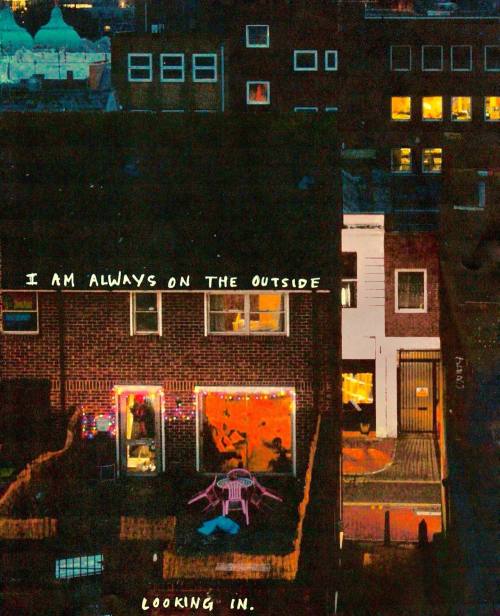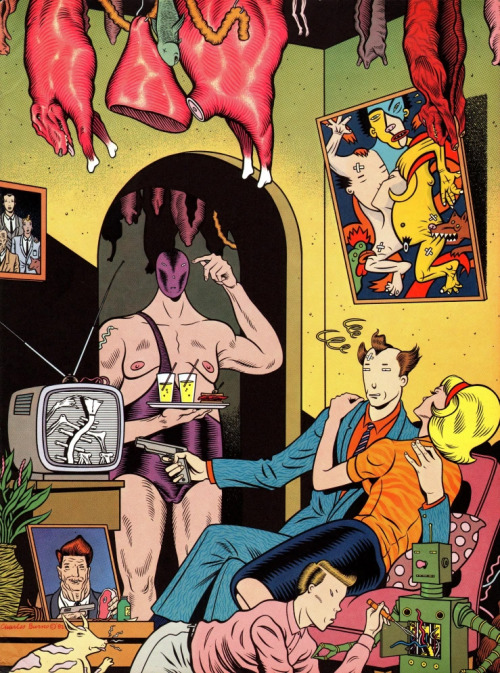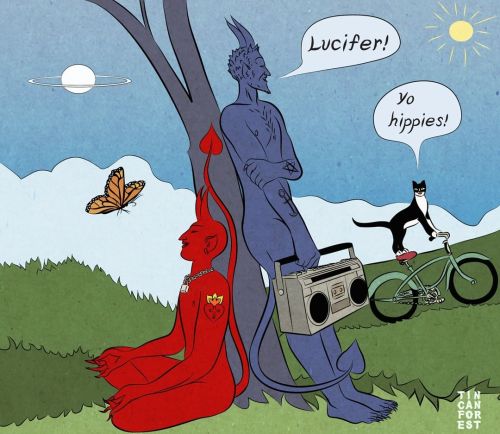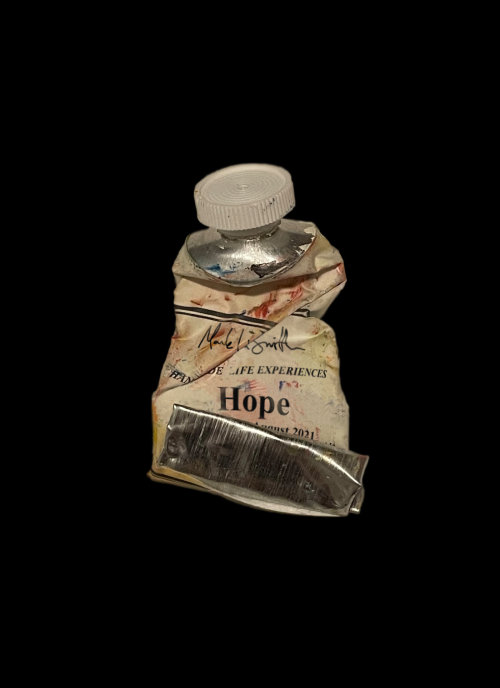Are you running a slight temperature? Do you feel a bit clammy? Are your glands a bit ‘up’? Test yourself, because you may well have come down with WORLD CUP FEVER!!!11111eleventy
Except of course you probably haven’t, as noone seems particularly able to get excited about this one, perhaps a result of the jarring cognitive dissonance required to simultaneously buy into FIFA’s inclusive ‘one sport’ messaging whilst at the same time holding the tournament in a regime best known for its less-than-inclusive attitude to anyone who isn’t straight (and leaving aside the equally-jarring cognitive dissonance of it taking place in a desert, just after we’ve all spent a week or so talking about how important it is that we start taking all this climate stuff PROPERLY SERIOUSLY this time).
Still, I imagine a significant proportion of you will be getting tanked tonight in anticipation of England tearing the Americans a football-shaped new one, so I hope you enjoy that (but, at the same time, know that there is almost nothing that would make me happier than an embarrassing English defeat).
I am still Matt, this is still Web Curios, and it is not a proper football tournament without Italy in it and so doesn’t to my mind technically count as a real World Cup anyway.

WE KICK OFF THIS WEEK WITH A MIX OF PLEASINGLY-WIBBLY (TECHNICAL TERM) ELECTRONICA BY CARLTON DOOM!
THE SECTION WHICH HAS TO RUSH AS IT’S OFF TO LUNCH AND WHICH APOLOGISES FOR ANY DROP IN QUALITY (LOL) YOU MAY NOTICE IN TODAY’S CURIOS AS A RESULT OF THIS SLIGHTLY-TIGHTER DEADLINE, PT.1:
- Save Your Threads: Whilst, obviously, I like Twitter and would be sad and not a little annoyed if it died, I confess to finding last Friday’s ‘THIS IS THE END, THE END OF IT ALL!’ flailing quite funny. Turns out, though, that Elon firing half the company and then forcing a significant proportion of the remaining people to quit hasn’t gutted the platform to the point of total dysfunctionality just yet (brief Musk-related aside here – it’s astonishing how the millions of people caping for him online seem oblivious to the fact that, even if you believe that his hard-line approach to cost-cutting and staff bloat is necessary, there is absolutely no need whatsoever to go about it in a way that makes everyone involved in the process so uncertain and unhappy. Turns out the man’s a pr1ck! Having to read the fcuker’s Tweets is also a painful education in hierarchical sycophancy – it’s honestly slightly heartbreaking to see the literally thousands of mooks in his replies who seem to think that telling a billionaire how great they are is going to induce said billionaire to chuck them a few quid or FINALLY recognise their generational talent and reward them with a position at his right hand. We really do love the taste of bootleather, turns out). Maybe, who knows, it will all be ok? Still, just in case it’s not, you might find this service useful – plug in a Tweet url and it will generate a datestamped PDF of the entire thread, useful for preserving the GREAT PATRIMONY OF HUMAN THOUGHT that is Twitter. This requires you to request access – it’s designed primarily for journalists, researchers and archivists – but it’s nice to know that someone out there is thinking of how to preserve all this stuff in a useful fashion. Oh, and if Twitter does start to get a bit flaky as a result of everyone who knows how it works being P45d, you might find this site useful too.
- Nitter: If you’re so upset and outraged by the fact that That Fcuking Man has bought the bird site and don’t want to fluff his ego by adding your data to the traffic stats that he keeps trumpeting as a measure of his vast success (GYAC Elon, people logging onto Twitter to check whatever mad sh1t you’ve said this week, or which collection of right-wing ghouls you’re currently cosying up to is not going to be the long-term financial panacea you seem to think it is) then why not use Nitter to check up on whatever you want to check up on. Basically this lets you look at individuals’ profiles, or search for specific terms, and look up the content without visiting Twitter dot com, and thereby sticking it to the plute by denying him a DAU. TAKE THAT, SQUARIAL-FACE!
- Some More Alternatives: I’m increasingly of the opinion that, should Twitter die, that’s probably it for me and social media, but should you still be desperate to find an appropriately-shaped digital liferaft to cling to then you might be interested in the latest pretenders. There’s Hive, which has seen a boom in signups this week and which I am told is functionally pretty good and Twitter-ish, but which only exists as an app and therefore is of no personal use for me whatsoever; there’s Koo, which is ‘big in India’ and is, according at least to some of their press materials, the second-biggest microblogging platform in the world after Twitter itself, but which (based on my cursory exploration) doesn’t really have a great English language community on it at present; and then there’s Post, which is significantly newer than either of the other two and which is literally being built from the ground up, and which is in limited early access at present. I have been playing with it a bit this week and it’s nice – it feels Twitter-ish, and the people seem nice, but Christ alone knows if it will take off, and if it does whether the small dev team will be able to manage. The various community teething problems happening on Mastodon instances around the world right now are fascinating real-world examples of just how fcuking hard community management and moderation is at scale.
- For Every Goal Scored: I’ve found it literally impossible to get excited by this World Cup, in common with millions of people around the world, for all the obvious reasons (and, er, the fact that Italy made a humiliating pig’s ear of qualification), but I thought this was a nice initiative – this site lets you commit to making a donation to the LGBT+ charity MindOut, pledging a set amount per goal scored at the tournament. Choose how much you can afford to pledge, from 10p to £1 a goal, enter your email address, and at the tournament’s end you’ll get sent a link to donate the amount you’re liable for. Which, obviously, you could then totally fail to click on, but that would make you a cnut and I’m sure you’re better than that.
- Digital Tuvalu: So, that was COP – do we feel like a significant number of the world’s most pressing environmental issues were meaningfully discussed, and that we have reached sensible resolutions as to how best to address them? GOOD! Cynicism aside, the loss-and-damage fund for nations most affected by the side effects of the world’s richest countries living it up on fossil fuels for the past 150 years does seem like A Good Thing, although as ever with this stuff I have a slight fear that the reality of what eventually gets committed will be significantly watered-down by the time it gets to the point of coughing up. The fund is designed specifically to assist countries like Tuvalu, which has created this little website to highlight the threat it’s facing – per the blurb, “Teafualiku Islet, our smallest island, is the first part of our country we’ll lose – so it’s the first we’ve recreated digitally. Without immediate, global climate action, all of Tuvalu will only exist here.” Which is a nice idea, and I don’t want to be too much of a miserable, critical w4nker about it, but, well…I feel justified because the website reads ‘in partnership with accenture’ and I don’t like them very much. This is SUCH a missed opportunity – you could have gone deep with a ‘metaverse’ gag here, creating a sh1t digital island that users could navigate around, the joke/point being that you can’t make digital replicas of some of the world’s remotest places because IT IS NOT THE SAME, and that is why it’s important we act to save the real islands asap; you could have got the community to built Tuvalu in Minecraft; you could have done LOADS, and instead what they did is build a one-page website, with a pretend ‘we’re uploading the palm trees now’-type graphic, and chucked a video on there along with a bit of ‘email your local representative’ campaign functionality. It’s a missed opportunity, basically, although frankly if we think that a website campaign is going to make a blind bit of difference to the future of a bunch of remote Pacific islands then, well, we might be deluding ourselves a bit lads.
- Swoosh: This is potentially interesting, at least as a canary in the coalmine for NFT/Web3/community type stuff in the mainstream world. Nike has launched Swoosh, which is basically a community hub based on the idea that the brand’s fans want to be involved in the process of creating its new collections. Which, you know, feels broadly right, although whether or not they will be interested enough to jump through the various NFT-related hoops that this sort of thing always seems to entail is another matter. You need a Nike ID and an access code to get in, but the general gist is as follows: “Nike Members will be able to learn about and collect virtual creations, which are typically interactive digital objects, such as virtual shoes or jerseys, that community members will soon be able to wear in digital games and immersive experiences. In some instances, community members will be able to unlock access to physical product or events like intimate conversations with athletes or designers.” Which, of course, is exactly the sort of bland corporate speak that sucks the life and excitement out of even the most thrilling of prospects, but at least gives you an idea of where they are going with this – according to the roadmap, the first Nike collection co-created by the Swoosh community will drop in 2023 sometime, so let’s see whether that does in fact happen or whether this gets quietly sunsetted when it becomes apparent that noone wants to get a fcuking Metamask wallet to participate.
- Coca Cola Dreamworld: It’s slightly amazing to me that we’ve had Augmented Reality for over a decade now and I am still yet to see anything approaching a compelling use-case for it – ok, fine, Google’s ‘big arrow on your phone pointing in the direction you need to go’ stuff is useful, but I haven’t seen anything fun which uses AR in a meaningful way (I am discounting Pokemon because the AR stuff was totally unnecessary to the actual gameplay, and all the serious weirdos who got properly into it turned it off after about a day). This doesn’t really do anything to change that – it’s a mobile game which is meant to promote carbonated sugarwater (no idea what the fcuk it has to do with tooth decay and type-2 diabetes) by letting you play a Guitar Hero-esque rhythm game by tapping your phone’s screen in time to the notes as they fall, and which exists in AR because…I don’t know, because one of the marketing team at Coke has a cousin or partner or crush who worked at the development studio, maybe? Still, if you want a reason to hold your phone up in the air while you desperately tap at its screen in a series of irregular, arrythmic spasms (or maybe that was just how I played it), this will be PERFECT for you.
- Stable Diffusion 2: This is more of an ‘FYI’ than a ‘click the link and gawp at the marvels of AI image generation’ – Stable Diffusion this week released v2 of its open source text-to-image model (here’s a link to the Github page if you’re techy and interested in running it), which from what I can tell is more of an incremental improvement than a real generational shift. This piece explains some of the changes – not least the fact that the model’s been tweaked to make it harder to create images of specific celebrities, certain artists, and bongo. There’s something slightly future-shocky in the fact that in the space of year we’ve gone from ‘this stuff doesn’t exist yet’ to ‘I am salty that the magical machine will no longer let me create an infinite gallery of naked, large-breasted hentai girls’ (but, inevitably, the guys who want to make the galleries of naked, large-breasted hentai girls will win out, because it sadly seems they always do).
- Edge Dance: You can’t play with this yet, but it’s FASCINATING – Edge Dance is basically code which can generate dance moves based on music that you feed it, or, per the website, a “powerful method for editable dance generation that is capable of creating realistic, physically-plausible dances while remaining faithful to arbitrary input music. EDGE uses a transformer-based diffusion model paired with Jukebox, a strong music feature extractor, and confers powerful editing capabilities well-suited to dance, including joint-wise conditioning, motion in-betweening, and dance continuation”. This is INCREDIBLE, honestly – scroll down the page and have a look at some of the video examples of the dances the machine has created. Now I’m not a choreographer, and I dance in exactly the manner that you image a middle-aged white man who likes techno dances, and as such am perhaps not best-placed to judge the quality of the steps generated but, well, they look to my untrained eye like ACTUAL DANCES. Who had ‘choreographers’ on their bingo card of ‘jobs that will be rendered obsolete by machines’? Also, if you think that this isn’t going to be used by every single record label to generate new TikTok dances for the hooky parts of every single song ever then, well, you’re wrong. I can’t wait for the first moral panic caused by an AI-generated dance move which has the unfortunate side effect of snapping the ankles of one in every ten humans who tries it.
- Oio: This is a nice idea. Oio is a design studio with a singular gimmick – the products that they design and make and sell will be man/machine co-creations, with AIs being guided to create specific articles and artefacts, with the final production designs being chosen and modeled by humans. Each thing they make will be produced as a one-off limited edition series, never to be repeated, creating a neat bit of scarcity and FOMO which, as any fule kno, is essential for the development of a high-end brand. The first collection is SPOONS – there are three slightly different designs on sale for the frankly staggering sum of 190 quid each, which strikes me as a LOT of money (yes, fine, they are silver, but still) but which obviously might turn out to be a wise investment when Oio turns out to be the Bauhaus de nos jours.
- Nation States: This is a rare example of a link being featured in Curios more than once, but I have a particular attachment to Nation States. This site launched in 2002, as part of the promo for a novel called ‘Jennifer Government’, a lightly-dystopian bit of futurefiction about a world in which corporations were basically state entities – at the time I was working as a lobbyist and hating it and using my 9 hours a day of high-speed internet access to become acquainted with all the ways in which the web could help me fill in the dead hours between arriving at work and drinking the pain away. I stumbled across Nation States somewhere and was HOOKED – you could create your very own micronation, name it, pick its politics, and each day check back to see how it was doing, each day being confronted with small decisions about governance that would affect your country’s progress. I did this for YEARS and then left the job and kind-of forgot about it, but this week I saw that its creator had posted about the site’s two-decade anniversary and, honestly, it is SO HEARTWARMING! There is a community! There are thousands (well, ok, maybe hundreds, but still) of people still tending their micronations, and maintaining the code, and moderating discussions, and this is what is wonderful and amazing about the web and about people and why I sometimes think that maybe everything isn’t totally terrible after all.
- 222: Do you feel that, perhaps, you are stuck in something of a rut? Do you want to open yourself up to NEW AND EXCITING EXPERIENCES? Would you also like to perhaps use said experiences as a way of meeting new people, potentially even romantically? I appreciate that everything I have written to this point almost certainly makes you think I am about to start extolling the virtues of swinging or polyamory but, I promise, I am really not – instead, this is the premise of mysterious website 222, which offers the following blurb: “We are on a mission to revitalize our social fabric through accelerating chance encounters. We’re not a dating app. We’re not a friend-making service. We’re a platform for unique social experiences. No profiles, no DMs, no scrolling, no swiping. Just say “yes” & explore the chance encounters you’d have never experienced.” Sign up, give them your phone number, answer a bunch of questions about your likes and dislikes and then…see what happens.
- The Voluntary Human Extinction Movement: It’s hard not to occasionally look around the planet and Wot We Have Wrought and think that perhaps, on some level, humanity hasn’t been the unalloyed boon to the rest of creation that we might like to think we are. If you find yourself quietly agreeing with the general vibe of that sentence, and if you every now and again find yourself humming that seminal Bloodhound Gang classic ‘Lift Your Head Up High (And Blow Your Brains Out)’ (sample lyric: ‘Life’s short and hard, like a bodybuilding elf; so save the planet and kill yourself’), then you might want to get involved with the Voluntary Human Extinction Movement, a loosely-affiliated organisation whose basic (and surprisingly cheery) message is ‘look, don’t have kids, it’s probably not worth it and maybe we should just die out, eh?’. “Phasing out the human species by voluntarily ceasing to breed will allow Earth’s biosphere to return to good health. Crowded conditions and resource shortages will improve as we become less dense” is the official shortform rationale, but you can read more about the movement and its founder in this profile. I particularly like the cheery signoff ‘Thankyou for not breeding!’ at the bottom of the homepage.
- Digital Benin: Oh this is GREAT – a superb bit of digital curation and archivism and cultural preservation, focused on the culture and language and history of Benin. “Digital Benin brings together all objects, historical photographs and rich documentation material from collections worldwide to provide a long-requested overview of the royal artefacts from Benin Kingdom looted in the late nineteenth century. The historic Benin objects are an expression of Benin arts, culture and history, and were originally used as royal representational arts, to depict historical events, to communicate, to worship and perform rituals. The digital platform introduces new scholarship which connects digital documentation about the translocated objects to oral histories, object research, historical context, a foundational Edo language catalogue, provenance names, a map of the Benin Kingdom and museum collections worldwide. Digital Benin connects data from 5,246 objects across 131 institutions in 20 countries. Digital Benin’s scope focuses on objects looted by British forces from the Kingdom of Benin (now Edo State, Nigeria) in February 1897 and distributed in its immediate aftermath. Together, these events and processes led to the worldwide translocation of the objects shown on this platform. A small set of objects is included in the catalogue to represent the broader context in which the artistic production of Benin guilds is situated: Bini-Portuguese Ivories, produced and circulated outside West Africa in the 16th centuries, objects produced in neighbouring regions of the kingdom and a selection of works produced by named artists after 1930, which are held in museum collections.”

NEXT, SOME PROPER TECHNO FROM PROPER TECHNO LEGEND LUKE SLATER!
THE SECTION WHICH HAS TO RUSH AS IT’S OFF TO LUNCH AND WHICH APOLOGISES FOR ANY DROP IN QUALITY (LOL) YOU MAY NOTICE IN TODAY’S CURIOS AS A RESULT OF THIS SLIGHTLY-TIGHTER DEADLINE, PT.2:
- Puffy Bear: Occasionally you’ll come across something online which you click on and look at and which you can’t help but wonder “is…is this a fetish thing?” – so it is with this, the frankly-terrifying ursine nightmare that is Puffy Bear. You know teddy bears, right? You know that you can get the REALLY BIG ONES, the sort of thing that is bought by well-meaning but almost-certainly-childless uncles or godparents and which inevitably ends up terrifying its recipient with its massive girth and dead eyes? Well, imagine a REALLY BIG teddy bear, right, but one which has had its arms and legs scaled up to actual human proportions so it looks like some sort of horrific plush Slenderman figure… THAT is Puffy Bear. I honestly don’t have the descriptive skills to adequately convey just how unsettling Puffy is – there’s something about the expression on his face that screams ‘I will at some point attain murderous sentience’, and there’s imagery on the site that seems to quite strongly suggest that there is a market for his services that veers from ‘friendly cuddling companion’ to ‘potential romantic partner’, and, honestly, no. WHY IS PUFFY ONLY EVER PICTURED CUDDLING WOMEN? WHY ARE THEY LYING ON HIM WITH A CONTENTEDLY-POST-COITAL SMILE? Puffy costs 160USD, and whilst there’s no explicit mention of this on the webpage I would not be at all surprised if you couldn’t ask for ‘extra attachments’ if you know what I mean.
- Lyre’s Dictionary: This is such a nice little toy – “Lyre’s Dictionary is a computer program that generates novel English words based on existing roots and patterns.” Refresh the page to get a new totally made-up but strangely-plausible sounding word, along with its definition; recent examples it’s thrown me include “gymnasis · (noun) the act or state of training” and the frankly brilliant “morsive (adjective) given to biting”, which latter one I am frankly going to start using at every chance I get.
- Asterisk Magazine: A new online magazine, should you want such a thing! Here’s the blurb: “Asterisk is a quarterly journal of writing and clear thinking about things that matter. We’re for Bayes’ theorem, acknowledging our uncertainty, wild imaginations, and well-constructed sentences. We’re against easy answers, lazy metaphors, and the end of life as we know it.” – I think, based on the above and some of the people who’ve contributed to the initial issue, this is a vaguely-rationalist-associated publication and as such your appetite for its content and opinions will largely map against your tolerance for Slate Star Codex and the like. There’s also an interesting bit of site functionality which I rather like – you can highlight passages from articles and create a personal scrapbook of bits you found interesting or useful which get stored locally on the site, which struck me as a smart idea that might be worth replicating elsewhere.
- The Ooh Directory: A great project, this, by Phil Gyford – it’s a DIRECTORY OF BLOGS! Like what you used to get in the olden days! This is new, and growing, and you can submit suggestions for additional blogs to include – they’re roughly categorised by theme, or you can browse by recently added or updated, and if you ever find yourself thinking ‘God I really miss the idiosyncratic joy of reading the inside of a stranger’s head every now and again’ then this will basically be catnip to you. In a few random clicks I have found, variously, the blog writeup of a long-running D&D campaign, a cooking blog maintained by a homesick Texan who longs for proper barbecue, one man’s obsessional love affair with vintage comics…this is, honestly, wonderful, and yet another pleasing example of the way in which some of the old spirit of the web (individual, idiosyncratic, self-published, odd) has seen something of a resurgence this year.
- The Old Vic Hub: I appreciate that this is not exactly a good time to be contemplating a career in the arts in the UK – here’s to all the poor buggers who were recently shafted by the Arts Council – but, should you or anyone you know be contemplating a career in the theatre then this set of resources compiled by the Old Vic might be useful. Here you can learn chapter and verse about what different jobs entail, how they work, and how to find them, with career advice and training materials and all sorts of useful content for anyone seeking to make their way in the industry – if you have a child in your life who’s contemplating a career in something soul-destroying-but-lucrative like accountancy, now’s your chance to fcuk up their future by convincing them to pursue a life of penury and stress instead!
- A Lot Of 80s Music: KCRW (I find the US convention of four-letter radio station names so upsetting – WHY CAN’T YOU CALL YOUR STATIONS STUFF LIKE ‘MAGIC’ FFS?) is an LA radio station which in the 80s hosted a quite incredible array of talent in its studios. This page collects the session recordings of people as diverse as REM, The Meat Puppets, the Cowboy Junkies and more – if you’re a fan of any rock, indie or new wave artists of the period there’s a decent chance that they’ll have featured here at some time.
- Junni: “We want to make the world more exciting and happy with new ideas and technology!”, parps this website, which is a laudable ambition which we can all get behind. Junni is a Japanese company and I confess to not really understanding what they do, but that doesn’t matter because this website made me laugh out loud and has just done so again even though I knew what was coming. Just click the link, let the site load, and when it asks you ‘would you like to know about our philosophy’ then, well, just enjoy. I don’t want to spoil anything here for you, but if you don’t want a cuddly tapir by the end of this then there’s something wrong with you.
- The Appreciation Effect: I am, as regular readers may have gathered by now, a miserable cynic with dust where my soul should be and a dwindling ability to feel. HOWEVER! I understand that others are not necessarily like this, and as such I present to you The Appreciation Effect, a service which is *just* the acceptable side of twee for me – it’s a simple premise whereby you can collaborate with a bunch of other people to arrange to have a series of short, positive daily messages sent to a mutual friend or loved one, each being an opportunity for the sender to tell the recipient how much they appreciate them and how great they are. Which, honestly, is really cute! Although I do hope that someone somewhere is monitoring the copy, as this could equally-easily become a targeted harassment campaign (NO MATT WHY MUST YOU ALWAYS THINK OF THE BAD THINGS???). This feels like something that could very easily be coopted by the right sort of brand for Mother’s Day or similar, so file this away until the next time you need some sort of saccharine content campaign to help you sell bunion cream.
- Kiwix: I’m slightly embarrassed that I didn’t know that this existed, but it is SO useful – Kiwix lets you download local copies of whole websites to your phone or computer, meaning that you could (for example) get a local copy of Wikipedia saved to your mobile so that you can access it even when offline (you can also download stuff about surviving disasters, for those of you of a more paranoid or survivalist bent, and a bunch of other similar information repositories besides) – there’s even a text-only version for people who don’t fancy the full-fat, increadibly heavy, picture-laden version of Wikipedia you get on the web. If you’re the sort of person who likes to get into arguments with strangers on planes and wants to be able to back up said arguments with COLD HARD FACTS (insofar as you can claim anything on Wikipedia to be ‘facts’) then a) this will appeal to you; and b) never, ever sit next to me on a plane, please.
- Quivr: I have to confess, I can’t think of ANY way in which Quivr, the latest in the seemingly-infinite procession of dating apps to stumble into my field of vision, can be a good idea, but maybe I am being stupid here. The gimmick in this instance is that you don’t make matches yourself – someone else does! Yes, that’s right, if you’re so exhausted by the concept of modern dating and The Apps that you can’t bring yourself to even swipe anymore then why not outsource all that emotionally-draining selecting to someone else? There is VERY limited information about exactly how this works, and I get the impression that this is very much a ‘proof of concept idea’ rather than ‘actual proper business proposition’, but I am genuinely intrigued at how messy and awful the premise could end up being. “Get matches handpicked for you! Allow the best matchmakers in your area to pick matches for you, or designate your family and friends. Compete with other matchmakers and set up the best couples for the happiest relationships!” Actually, I take it all back – this sounds GREAT and should it ever take off in the UK I am absolutely going to sign up to play actual Cupid with actual real people. What’s that, Immanuel? The means/ends distinction? Away with you! (I know you all secretly come here just for the occasional undergraduate-level philosophy jokes).
- Natural Habitat Shorts: Natural Habitat is an animation series which lives largely on TikTok but which is also compiled here for ease of use and for everyone who would prefer not to engage with CrackTV. This is the very definition of ‘gentle, occasionally slightly sardonic liberal humour featuring animals’, but if that doesn’t turn you off immediately then you might enjoy these (the art style is cute too, if that’s a selling point).
- Madsounds: A friend of mine works at Spotify – I must ask him what the company thinks about all the hacks and plugins that people build for it, and whether they have ever considered creating a sort-of ‘build your own Spotify hacks’ modular toolkit for making it easier for people to build on the API. This week’s ‘people doing interesting things with Spotify’ link comes in the shape of Madsounds, which basically gives you a new ‘Discover’ playlist, based on your tastes, daily rather than weekly. This is a really nice idea and an excellent way of making your daily listening a bit more varied than it might otherwise be.
- Managing The Wilds: My notes for this one read, simply, ‘Wolves?????’, and, frankly, I am not sure what I can add to that. I have literally no idea whatsoever what is going on here, or why this exists, or what I am supposed to take from it other than that it’s a wordless imageblog, that it seems to be about reintroducing wolves to the wild, and that it features a surprising amount of imagery pertaining to animal faeces. If anyone can explain this to me then I would be incredibly grateful.
- All Light Expanded:Oh wow, this is quite wonderful. ‘All Light, Everywhere’ was a (seemingly pretty high-concept) film released last year all, whose Wikipedia entry describes it thusly: “[All Light Expanded] follows the biases inherent to the way humans physically see the world, focusing primarily on the usage of police body cameras and other forms of police surveillance, but also tracing studies of solar eclipses as well as the parallel development of automatic weapons with the motion picture camera.” This website is a companion project to it, “an interactive companion of articles, quotes, links, and archival materials that inspired the 2021 documentary”, and whilst I can’t pretend to ‘get’ the themes and references here, I think it’s SUCH an interesting exercise in presenting themes and concepts as they relate to a work. The UI in itself is fascinating – you can select elements on the left of the page which relate to themes that crop up in the film, and these are expanded on the right with references and links, and, honestly, I think there is a lot to be taken from this from a webdesign and IA point of view.
- Sunday Paintings: Bryon Kim is a US artist, who for many years now has been making a painting on most Sundays. This website collects those Sunday paintings, single images which often come with short notes, acting as a low-key, minimalist, episodic diary of sorts. I love this – I lost an hour this week going back through time and charting the changing seasons and skies, and Kim’s changing moods, through the paintings – and I really hope, given that the site’s not been updated since mid-September, that they are ok and just on holiday or something.
- Blueprints for Intelligence: How we visually represent AI is an interesting question – how can we, or should we, attempt to visually communicate what is happening when machine learning is doing its thing? This is a wonderful collection of historical illustrations of ‘machine thinking’ compiled by Philipp Schmitt, who writes: “Artificial Intelligence (AI) is often illustrated with sci-fi characters. That’s misleading. ‘Blueprints for Intelligence’ is a visual history of AI told through a collection of diagrams from machine learning research publications published between 1943 and 2020.Looking at the history of AI through its diagrams lets us trace key tendencies in the technology’s evolution. Unconcerned with what these figures might tell a researcher, this project explores what they say about the researcher. It draws connections between the visual representations of neural networks and the researchers’ conception of cognition.” Super-interesting, both in terms of design and philosophy.
- WOW Geoguesser: I never got into World of Warcraft, even when I was briefly doing the PR for Blizzard and sort of had to try for professional reasons, but I am aware that there may be some of you who lost hours (and friends, and lovers, and jobs) to the MMO – if you’re one of those people (and, really, if you’re not then you probably don’t need to click this one) then you may be one of the exclusive club of people who might stand a chance at playing this. Presented with a screenshot of a location in WoW, you simply have to guess where it is – obviously normies need not apply, and if you can get ANY of these right then it’s probably important to accept that you have (or, I hope, had) something of a problem.
- DugBunnyPuzzle: Get the dogs and the bunnies to the right locations on the board – there’s a new game each day if you want to add something to your Wordlerotation, and it’s a gently-amusing way to wake your brain up (although I confess to taking an embarrassingly long time to work out what the fcuk was meant to be going on – I recommend clicking the question mark icon because the rules are actually pretty simple (and the way they are presented is cute too)).
- Barnacle Goose: I hadn’t seen a good Clicker game for a while, so it was lovely to come across this new(?) work by Web Curios favourite Everest Pipkin, which is pretty much entirely baffling at first but which slowly reveals itself to be an odd, interesting, moderately-unsettling project to create…well, life itself. Pipkin describes this as “an abiogenesis body horror idle clicker”, but there’s a slightly-less oblique explanation on the project given by the Leicester indie cinema and arts centre that commissioned it (also, can we just take a moment to applaud that commission – MORE ODD BITS OF WEBART, PLEASE, INDEPENDENT CINEMAS OF THE WORLD!): “The Barnacle Goose Experiment is an idle clicker game set in a world where spontaneous generation is commonplace. As a player, you are a researcher studying the creation of new and living things out of raw and non-living matter. In order to undertake this work without experimental contamination, you are locked inside of a hermetically sealed dome — entirely empty. As such, the only raw material for experimentation is that of your own body. Through the accretions of self, the slow learning of mechanical systems, and the simple duration of time, you must uncover the combinatory logic of spontaneous generation and make again a living world from a dead one.” This is GREAT. Creepy, weird, but great.
- The Winners of the 2022 Interactive Fiction Competition: The votes have been counted, and this year’s winner is…The Grown-Up Detective Agency! Here’s the synopsis: “The only thing Bell Park likes more than a mystery is solving it on her own. But when a time-traveling 12-year-old version of herself lands face-down on her rented co-working desk, she’ll have no choice but to take the displaced kid detective along on her latest case. FOLLOW THE TRAIL of a missing heterosexual on the strange streets of Toronto! Investigate a QUIRKY CAST of drag kings, chicken wing enthusiasts, and women in elaborate cat make-up! Thrill in the PERVASIVE ENNUI of your early twenties! Struggle to remember where your preteen self was at with the whole BEING GAY THING!” – I played it this week and it’s excellent, but if that doesn’t quite appeal then you should check out one of the other commended entries as there’s sure to be something you fall for.
- The LEA Project: Finally this week, an interactive musical webgame storyhorrortypething – I don’t want to spoil this, but it’s REALLY nicely done. All I will tell you is that you need to log in to the site, and the instructions as to how are RIGHT THERE IN FRONT OF YOU. From then, you’re on your own – I love the craft that has gone into this almost as much as the mechanics, and I can even deal with the musical-ness of the whole thing. Wonderful stuff.

By Sophie Holden
THE CIRCUS OF TUMBLRS!
- Groove Is In The Art: Fine, not ACTUALLY a Tumblr but it very much feels like one. “Pop art and psychedelica meet the mainstream on vintage classical, instrumental and children’s album covers with an explosion of line art and color in Groove is in the Art.” – this is such a good inspiration resource for a very particular 60s/70s aesthetic
- A Game Of Clothes: This, though IS ACTUALLY A TUMBLR! You can probably guess what it is from the title, but in case you’ve forgotten all about the world’s inexplicable six-year obsession with that show about dragons and sex, it’s a look at the fashions that the characters from the GoT books would wear if they were real people who could buy couture. Weird, but whatever makes you happy.
- Restauranting Through History: Also not a Tumblr, but also feels like one! This is ACE – a regular look back at old restaurants in the US, their menus and the food they served and the place they held in local society of the time… if you’ve any interest in food history, particularly North American, you will love this.
- Chuck Tingle: DR TINGLE IS NOW ON TUMBLR! You all know Chuck Tingle, right? Author of a seemingly-infinite number of (actually surprisingly wholesome) erotic novels with titles like ‘Pounded in the Butt by the Sentient Manifestation of My Own Latent Homophobia’ (this is not a real Tingler, but it may as well be), he has decided to create this Tumblr in case the whole ‘Twitter is dying’ thing turns out to be real and, honestly, I can’t tell you how much I love Chuck Tingle and his very idiosyncratic posting style, and the genuinely caring community that exists around his very, very odd stories about gender representation and fluidity and love and self-acceptance. This may be one of the nicest places on the internet right now.
THE TROUGH OF (INSTA) FEEDS!
- Dan Catt: The account of one Dan Catt, a printmaker whose work I stumbled across this week and really enjoy – you might too.
- Moon Over Marine: OH GOD THIS IS AMAZING. This person does needlework in the style of 80s videogames, which may not sound good but I promise you that once you click this you will be transported back to a world of brown carpets and flickering CRTs and Spectrums and CGA and Findus Crispy Pancakes (or at least you will if you’re an English person in their mid-40s, I can’t speak for any of the rest of you fcukers).
LONG THINGS WHICH ARE LONG!
- Dan Hon On Elon: We begin this week with a few pieces on That Fcuking Man and that bloody website – which, honestly, I totally understand if you skip because, well, it’s been EVERYWHERE. Still, if you have additional appetite for Big Thinking about What This Means then you could do worse than reading Dan’s typically interesting and readable take on the whole thing, which covers Silicon Valley’s longstanding obsession with Great And Visionary Men, the fact that the world can usefully be divided in terms of ‘those who have at some point suffered from abuses of power in their lives’ and ‘those who have not’, and all the various reasons why That Fcuking Man’s actions over the past week have been suboptimal on both a human and managerial level. Excellent.
- The Unbearable Mundanity of the Very Rich Man’s Mind: This is another cracker, from the guy who ordinarily writes the ‘Hola Papi’ queer advice blog but who this week pivoted into writing about how incredibly fcuking dull and exhausting it is to have your experience of life and the world conditioned and sculpted by very rich men. “These past few years, especially, have felt like being locked in a theater where the only actor on stage is holding a gun and telling us to clap. Attention is being demanded, and the person demanding it doesn’t really think of any one of us as being on the same level of personhood as they. We have little choice but to suffer them, to some degree.” – I believe the phrase is ‘preach’.
- What Do You Want From The Internet: The last link about Twitter, promise – this is by Brian Feldman and is about how maybe, actually, Twitter dying might be good for us because we have become fat and lazy from gorging on its infinite content stream and this is a chance for us to rediscover the exploratory hunger of The Old Web. This rather resonated with me, though I accept that it could also be read as being, well, a little snobbish: “You are mad about friction. The broad answer is that it was easy to stay put and the costs of preparing for the worst is high. Kinda like climate change, I guess? But I also think modern internet users are generally complacent. I love pulling at weird threads on the internet and seeing where they lead — stepping outside, so to speak. I think many others are more interested in training a personalized algorithm to bring the silly JPEGs to them — ordering Seamless, if you will. For a lot of users, Twitter was 9GAG.” Well quite.
- Facebook Is A Freakshow Ghost Town: I’m including this essay – in which the writer talks about how Facebook’s slow decline into cultural irrelevance has made it a weirdly-compelling and interestingly-odd corner of the web to hang out in again – partly because I think there’s a bit of truth in it and partly to help punt my niche belief that we’re all going to be getting back on Facebook in the next year because, honestly, it’s there and it works and everyone has an account so why not? NB – please do not remind me of this when you all realise how spectacularly, stupidly wrong I am.
- A Feminist Future of Digital Care: An excellent essay by Rachel Coldicutt which explores how we might usefully change the way in which we consider and conceive of tech and how we use it, and which effectively lays out a multipoint plan for how we might want to do things in future. There’s some great thinking in here – I particularly liked the part about decoupling tech skills from STEM, which is so true but which I’ve never seen articulated this well before – I suppose if I had a criticism it’s that I don’t think the essay does a good enough job of explaining to the reader (ie me) what makes this framework specifically ‘feminist’, but I appreciate that that might just be me not knowing nearly enough about feminist theory. Anyway, this is a good read and a useful one for anyone interested in the design and creation of digital services and how we think about them.
- The Memeification Of Pop: Or ‘why every song needs not just a dance now but some sort of memeable moment so that people can copy it on TikTok and thereby increase the song’s reach’. I can’t wait until they apply that Echo Dance machine learning thing from the first section to this and let the machines come up with the ‘kooky moments’ too. If any of you reading this are in the business of delivering speech or presentational training to executives, can you PLEASE start lying to them and saying that it’s important to include these sort of things in their keynotes and annual results presentations, please? I want to see the FTSE100 CEOs making with the camp eye-rolls as they take analyst questions.
- Worldbuilding Pt.2: The second in Dirt’s series on the growth of ‘worldbuilding’ as a broad concept (I linked to the first one a couple of weeks ago, as you doubtless recall). This covers the NFT community stuff and the few crypto-gaming projects that seem to have some actual meat to them, as well as touching on the baffling success of ‘Loot’ – I find the thesis that worldbuilding is an increasingly vital part of brand development a bit silly, but also exactly the sort of ‘silly’ that you can probably do reasonably well flogging some smart consultancy around.
- TikTok Customer Service: Fcuk’s sake – have we been delivered from the horror of self-aware brand Twitter only to be plunged into a new one, the ‘sassy customer service clapback’ on TikTok? It would appear so, or at least it would if you believed that the few examples included in this Wired piece constitute a trend (I am…skeptical, personally). I’m including this not because I think it’s particularly true or important but because a) it might let you write a community management strategy based around ‘being a total pr1ck’, which sounds more fun than the usual bland positivity; and b) I am genuinely fascinated to see exactly what sort of small-but-significant cultural changes are engendered by us becoming a society that is almost entirely visual.
- FutureShopping: This is a surprisingly-interesting piece of (sorry) ‘thought leadership’ (really, I am so sorry), ostensibly written by MD of Selfridges Ann Pitcher (maybe I’m being unfair on Ms Pitcher here, but these things are never, ever actually written by the person whose name appears at the bottom) and covering what she perceives to be the main changes and challenges facing the retail sector (specifically department stores) in the coming years. If you work in retail, or retail-adjacent consultancy, this is worth a read – in particular the section about ‘control’ was interesting (the final paragraph, fine, is a bunch of bland pabulum about ‘making the world a better place through selling more crap’, but I figure you’re contractually obligated to include that stuff in any corporate nonsense you write these days and so I’ll give it a pass).
- Tradwives vs Birth Control: Quick update from the stealth front of the culture wars, where the tradwife movement is promoting ‘fertility awareness methods’ as alternatives to birth control, based on scare stories about the medical dangers of the pill, etc. I liked this piece because it made the connections explicit: “far-right venture capitalist and noted surveillance titan Peter Thiel invested millions into the conservative online women’s magazine Evie, which recently created an app to help people track their periods (with very flimsy promises around privacy) and dissuade them from using birth control. And in a popular Twitter thread shared this week, a female writer at the conservative National Review called birth control “actively harmful” and erroneously identified it as “a carcinogenic.”” I know I bang on about this a lot, but I think it’s important to follow the money here.
- The Real Creator Economy: Oh, ok, fine, that’s my own snarky title not the actual title of the piece – this is an article about the artists and digital makers who exist making things for people in online communities and worlds, and who have been for years, and who make up what I think of as the ‘real’ creator economy, to whit ‘people who make digital goods and transact with others to sell them’ rather than ‘people who make 3% commission selling tat to their followers’. This is an interesting look at an ecosystem that’s been around for 15 years and which is, slowly and quietly, creating some foundational aspects of what might one day form a small part of a shared, pervasive digital experience (I WILL NOT USE THE ‘M’ WORD).
- Dog Names: This is an actual academic paper, and I appreciate not all of you will be itching to read this based on the synopsis: “The Names of All Manner of Hounds is a unique list of 1065 names for hunting dogs (running hounds, terriers and greyhounds) found in a fifteenth-century manuscript that has recently been sold into a closed private collection. The present article offers a critical edition of this unusual text, which has never been published before, preceded by an introduction that contextualizes its contents in terms of the hunting culture and the milieu to which they belong. For these purposes I examine a number of medieval and early modern hunting treatises that are revealing about attitudes to hunting dogs and that mention a smattering of names given to them. I discuss the enthusiasm felt by hunters towards their hounds, an enthusiasm often expressed in terms of the pleasure that is derived from the sound of a pack in chase, and consider the importance of knowing hounds individually by name.” BUT! I promise that once you get to the list of dog names you will be CHARMED – there are some true greats in here and you may find by the end of this that you have an almost-irrepressible desire to rename your pet to something more florid like ‘Mownferaunt’ or the slightly-baffling ‘Go-byhynde’. Wonderful.
- Goncharov: Speaking of worldbuilding…this is wonderful, and one of those occasional flashes of collective inspiration which make the internet feel like a wonderful hive mind rather than some sort of Sartrean hellhole. You probably know the story by now, but if you’re less terminally-online than I am you might have missed the fact that this week the web discovered a great, lost Scorsese masterpiece called ‘Goncharov’ which obviously doesn’t exist but now has a quite astonishing body of content around it to try and convince you that it in fact does. Honestly, human creativity (and our propensity to use it for wonderfully-silly things) is a source of endless fascination to me.
- Recalling The Leviathan Axe: I am currently playing the new God of War game (it’s excellent, honestly), and as such really enjoyed this post from one of the designers of the last game in the series in which they discuss how they designed one small, specific gameplay feature – the way in which the main character’s axe returns to his hand once thrown. You may not think that this is going to be interesting – and, fine, if you’ve never played the game and have no interest in game mechanics design then perhaps you won’t, but you SHOULD – but it becomes a really interesting look at the way in which small tweaks can have outsize impacts on user experience.
- The Great Toaster Hoax: I mentioned Wikipedia earlier – it’s kind of amazing that a free website created by unpaid contributors has ended up being a genuinely-useful and not-entirely-inaccurate source of information on almost anything you can think of. It is, though, not TOTALLY accurate, and occasionally you do get some actual lies creeping into otherwise accurate entries. So it has been for years with the Wikipedia entry for the toaster, which stated with confidence that the first working model was invented by a Scotsman called Alan Macmasters – a man who never in fact existed. This is a lovely little writeup of both the hoax and how it was discovered by a 15 year old kid, and a useful reminder that you shouldn’t believe everything you read on a wiki.
- Insomnia: I have, to date, been fortunate enough to be a relatively easy sleeper, but have lived with my share of insomniacs and it looks MISERABLE. This is a great essay in which Rachel Handler talks to a variety of sleep experts to work out exactly which of her pre-bed habits is fcuking her up – it’s funny and readable and will, perhaps, make you feel marginally better if you’re one of those people who falls asleep phone-in-hand and then wakes up at 3am for a pleasant few hours of staring at the ceiling while your thoughts whir like horrible termites. There’s a lovely Nabokov quote about insomnia that I can’t help but recall when reading about it – “All nights are giants, but this one was especially terrible” (which I just checked and I last quoted on here in 2016, fcuking hell).
- The TikTokification of London: On the one hand, this is VERY much ‘old man shouts at clouds’ stuff – on the other, I am an old man and I found myself nodding along to this to an upsetting degree. See what you think: “A disease is crippling London. You see it in the nightclub closures, each vibrant, interesting, or queer space on the fringes of the city that’s forced to shut down. You see it in the Zone 2 pubs that rip out their carpets and banquettes and install spartan, wooden canteen tables and faddy resident kitchens. You see it with the central London vanity projects: the mounds, roof terraces, and other quasi-public spaces built with a grubby combination of taxpayer’s money and murky foreign investment. Welcome to the modern city: London as an experience; London as a thing to be consumed.” This articulates quite a lot of the things that I have found a bit weird and sad about the city since I came back – but, again, maybe I’m just old.
- James Cameron: It seems a bit odd to link to a profile of a ‘genius auteur’ after having kicked off this section with several essays explaining why that sort of mythologising is bad and dangerous and rarely-warranted or helpful; still, this GQ piece on James Cameron is fascinating (although, honestly, I am disappointed that the reporter didn’t see fit to ask Cameron ‘So Jim, how come your admittedly record-grossing film has left all the cultural imprint of an issue of the Beano, and what does that say about what you’re making here?’). He in no way comes across as a person I want to spend time with (in fairness I imagine he’d feel much the same way about me), but I’m always fascinated by people with this sort of energy and drive. Imagine being him – it must be EXHAUSTING.
- Letter To My Younger Self: “Sara Eckel writes to the 25-year-old she once was, just starting out as a writer in New York City in the 90s.” – this is so much better than that slightly-beige tagline makes it sound, I promise. This is beautifully-done, and I am always a sucker for anything written in the second person.
- Beachcombers in Doggerland: Finally this week, I know that describing essays as ‘haunting’ is lazy hackwriting of the worst sort but, well, it is and I am. This is a short story about death and memory and the ocean and letting go, and it is beautiful.

By Jude Sutton
AND NOW, MOVING PICTURES AND SOUNDS!:



































